On this page I would like to report something about the used technology. The main problem we had to solve was the missing network connection at 107m. Besides also the electricity connection was unclear at first and we thought also about a solar plant. But the CG Group was kind enough to help us with this problem by allowing us to get the electricity from them.
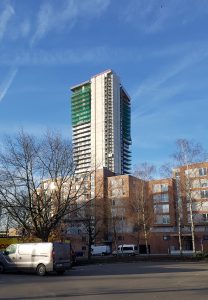
What distinguishes us from all other falcon cameras is that the falcon box is located at the top of a very exposed building. On the one hand the access to the tower roof is limited (you can’t even change something), on the other hand we are in a height of more than 100 meters and therefore quite exposed to the forces of nature.
We currently have two cameras in use. One is a PTZ dome camera (Cam1), which is attached to the roof of the box. This camera is supposed to monitor the balcony in front of the hatchery. The camera can be panned and zoomed. Therefore we can look into the hatchery as well as along the balustrade. The camera also has a better resolution, so we will take some snapshots with this camera.

The second camera is mounted inside the incubator. It is a mini camera (Cam2) with full HD resolution. This camera also transmits sound. In the stream of the Falken-Cam2 you can activate this sound.

The pivotal point on the roof of the tower is a POE-capable switch. We have chosen one that is suitable for harder outdoor use. This switch is also able to supply the peripheral devices with power via the network cables (POE = Power of Ethernet). For the professionals: it can provide passive POE (24V), which the WLAN client needs and active POE PLUS according to the standard 802.3at-2009, which is necessary for the cameras, so we do not need separate power supplies. All peripheral devices are supplied via their network cable.
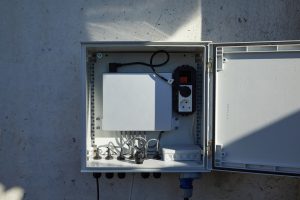
The switch, together with a surge arrester, is installed in a watertight switch cabinet. Both the mains connection and the network connections are designed with watertight screw connections (IP67).
The missing network connection was solved via a PTP WLAN radio link. The system has a bandwidth of >600Mbps and is designed for a temperature environment of between -40°C and 70°C. The system has a bandwidth of >600Mbps. It survives wind speeds of 200km/h.. With the help of an optical device and a software tool, the two antennas were aligned.
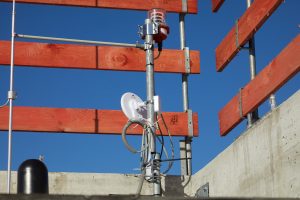

The recording is done by a network video recorder (NVR). This server records redundantly on two 8TB video hard disks.
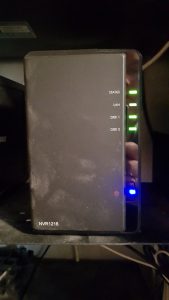
The server is also responsible for providing the video streams. These two streams are sent to the website via a streaming provider.
We have taken various precautions for lightning protection
- The devices used are designed for use in harsher environments and are less sensitive to overvoltage.
- Surge arresters are installed in all lines (mains and network) and, as far as possible,
- The hardware is installed in the vicinity of lightning arresters. Direct impact should therefore be very unlikely.
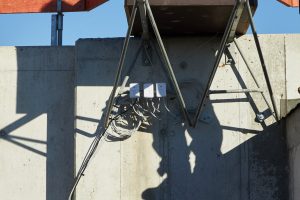
Nevertheless, only after a few thunderstorms will we know whether these measures were sufficient.
Friedemann Tewald
Views: 310

